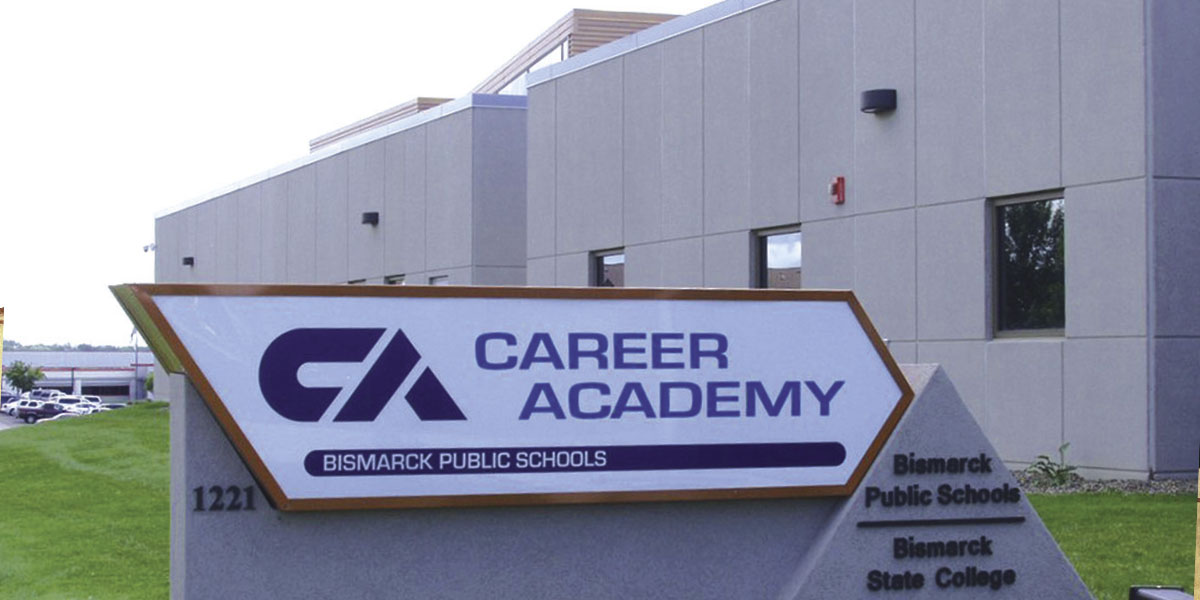In 1939, Bismarck State College (BSC) was established on the third floor of Bismarck High School. In those early years, the Bismarck, North Dakota–based college and high school shared space and teachers in an effort to keep costs down and provide opportunity for Depression-era students to further their education. While BSC eventually left the school district to become part of the North Dakota University System, the college’s relationship with the school district has remained strong. Several decades of collaboration have resulted in multiple benefits to the community and its educational institutions.
Dual Developments
Relationships with the region are a vital part of the mission of our nation’s community colleges. For BSC, graduates of our local school district—who attend either Bismarck High School or Century High School, which opened in 1976—make up the bulk of our traditional student population; community members populate our continuing education classes; and our facilities host a wide array of community activities.
These relationships now go even deeper. In 1985, when BSC became part of North Dakota’s higher education system, the college and the Bismarck School District negotiated a 25-year usage agreement for the district’s technical center, originally built in 1974. While the tech center became a BSC building, college and district leaders agreed that the two entities should share space and equipment for some of the more costly trade and technical program elements—welding, carpentry, and auto mechanics, to name a few.
Twenty years into that agreement, the school district decided a new building was needed for K–12 technical programs, but undeveloped space was scarce. Bismarck State was able to provide land for a new career academy. The district in turn contributed the equivalent of the land’s appraised value to the renovation of the technical center, which also received funding from the state legislature. This contribution ensured that the two buildings would serve students equally well. Through a joint-powers agreement, our two entities have shared both the new Bismarck Public Schools Career Academy and the renovated BSC Technical Center.

Building Equity
The joint-powers agreement covers the land lease and operating costs, and calls for an annual 50-50 facility usage assessment, in which the district and the college conduct a square-footage analysis to calculate and ensure equality in the entities. To date, the shared space has been beneficial from both a quantitative and qualitative perspective.
- Quantitative measures. Our students attend classes in an $11 million state-of-the-art facility built at no cost to BSC; and we share the expense of tools, parts, technology, and equipment—with substantial savings.
Operational costs accrue savings primarily as a result of the economical use of shared facilities. Some of our trade and technical programs, for example, share shop and classroom space. The latest usage analysis indicates approximately 48,000 square feet of shared space. This equates to at least $10 million in capital investment avoidance. Operations and maintenance savings are estimated in excess of $200,000.
- Quality measures. Exposing students to the most advanced technology available opens their eyes to the benefits of attending the local community college. Articulation agreements in some of the programs provide an additional incentive for seamless admission of high school students to Bismarck State College.
Another collaboration beginning this fall involves the BSC providing learning space for 300 ninth graders, as the district builds a new high school. The students will spend two years at the college, attending classes in the career academy and the technical center until the new school is completed in 2015.
Thanks to our shared space, these students can come together two years prior to the high school’s completion and prepare to become the first graduating class of Legacy High School. In this way, Bismarck State College continues to build on its history as the community’s ever-dynamic college that provides ongoing benefits for all.
SUBMITTED BY David Clark, executive vice president, Bismarck State College, Bismarck, North Dakota


